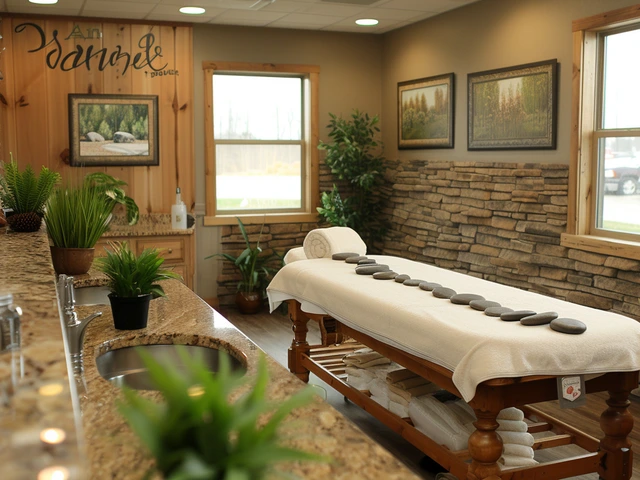Craniosacral Therapy: A New Approach to Mind-Body Healing
Understanding Craniosacral Therapy
As someone who constantly seeks a balance between mind, body, and soul, I stumbled across Craniosacral Therapy (CST) a while back. To be frank, encountering the term "Craniosacral Therapy" for the first time left me equally intrigued and puzzled. But, after taking a deep dive into the literature, benefits, and personal experiences - trust me - this therapy is bewitchingly fascinating. Born from the combined wisdom of holistic and western medicine, CST is a gentle, non-invasive therapy focusing on releasing tensions deep within the body to alleviate pain and dysfunction, improving total body health and function.
The Origin of Craniosacral Therapy
Did you know Craniosacral Therapy originated from osteopathy? I sure didn't! It was developed in the late 1800s by Dr. William Sutherland, a student of the founder of osteopathy, Dr. Andrew Taylor Still. As he studied the intricate structures of the human skull, he made astute observations about the subtle, rhythmical movements of the cranial bones. These movements, he conjectured, were deeply linked to our body's overall vitality, a somewhat radical concept at the time (and even to a lesser degree today!). Let's take a moment to appreciate Dr. Sutherland's inquisitive and critical mind which gifted us this enigmatic therapy.
How Does Craniosacral Therapy Work?
I guarantee you'll raise an eyebrow at the simplicity of CST. It primarily involves the therapist placing their hands on the patient, which allows them to tune into what they call the craniosacral rhythm. The practitioner gently works with the spine and the skull and its cranial sutures, diaphragms, and fascia to ease the restrictions of nerve passages. Isn't it incredible how delicate manipulations can lead to significant shifts in our body's functioning?
Into the Depths of a Craniosacral Session
Perhaps you’re pondering, "Eliza, what does a typical CST session look like?" Well, me and my curiosity signed up for a session a few months back, a compelling adventure indeed. A CST session generally takes 30 minutes to an hour, and guess what? You stay clothed! Hallelujah for that, eh? The practitioner begins by gently placing their hands on various points around your head, spinal column, and sacrum, delicately manipulating your craniosacral rhythm—a welcoming break from my daily routine, I must admit.
Health Benefits: The Healing Touch of Craniosacral Therapy
The fascinating aspect of CST is that it’s not only a therapeutic practice but also a preventative one. Let's go through some of its incredible benefits, shall we? Foremost, CST is known to alleviate various physical ailments such as chronic neck and back pain, migraines, and temporomandibular joint syndrome. Following my session, I experienced an unexpected alleviation in my chronic migraines, and Gregory noted a marked improvement in my mood. Secondly, the calming effect of CST is paramount to tackling stress, anxiety, and insomnia. I felt an intense connection between my mind and body throughout the process, an experience of tranquility that I recommend to everyone. Moreover, recent studies suggest that CST may even boost your immune system. Remember, a happy body fosters a happy mind.
Dispelling Myths and Misconceptions
Even though Craniosacral Therapy is becoming increasingly popular, it's still shrouded in myths and misconceptions. One common myth is that CST is 'woo-woo' nonsense. Far from it! Many empirical studies vouch for its efficacy in addressing numerous health issues. Another misunderstanding is the belief that CST is painful, given that it involves manipulation of the skull and spine. On the contrary, I found it relaxing and reassuring. It felt like warming my toes by the fireplace on a chilly Vancouver night — soothing, calming, and relaxing.
How to Select a Craniosacral Therapist
Choosing a qualified Craniosacral Therapist is essential to reap the benefits out of this holistic therapy. Peer references, qualifications, experience, and positive testimonials are key indicators of credibility. I found my therapist through a friend's recommendation, and I couldn't be happier. Also, comfort and trust should be your deciding factors. Like selecting the perfect pair of shoes, a therapist should make you feel supported, comfortable, and heard. Trust your intuition and don't rush; the right therapist will come your way.
In conclusion, Craniosacral Therapy is a holistic path to wellness that works by harmonizing our body's natural rhythms. My journey with CST has enriched my life and well-being considerably and has given a new purpose to my writing, my curiosity, and my beloved Toffee's feline carefree attitude. If my experience stirs curiosity in your soul, I encourage you to explore the fascinating world of CST. Embrace it and let the therapy guide you toward a healthier, happier life!







Comments